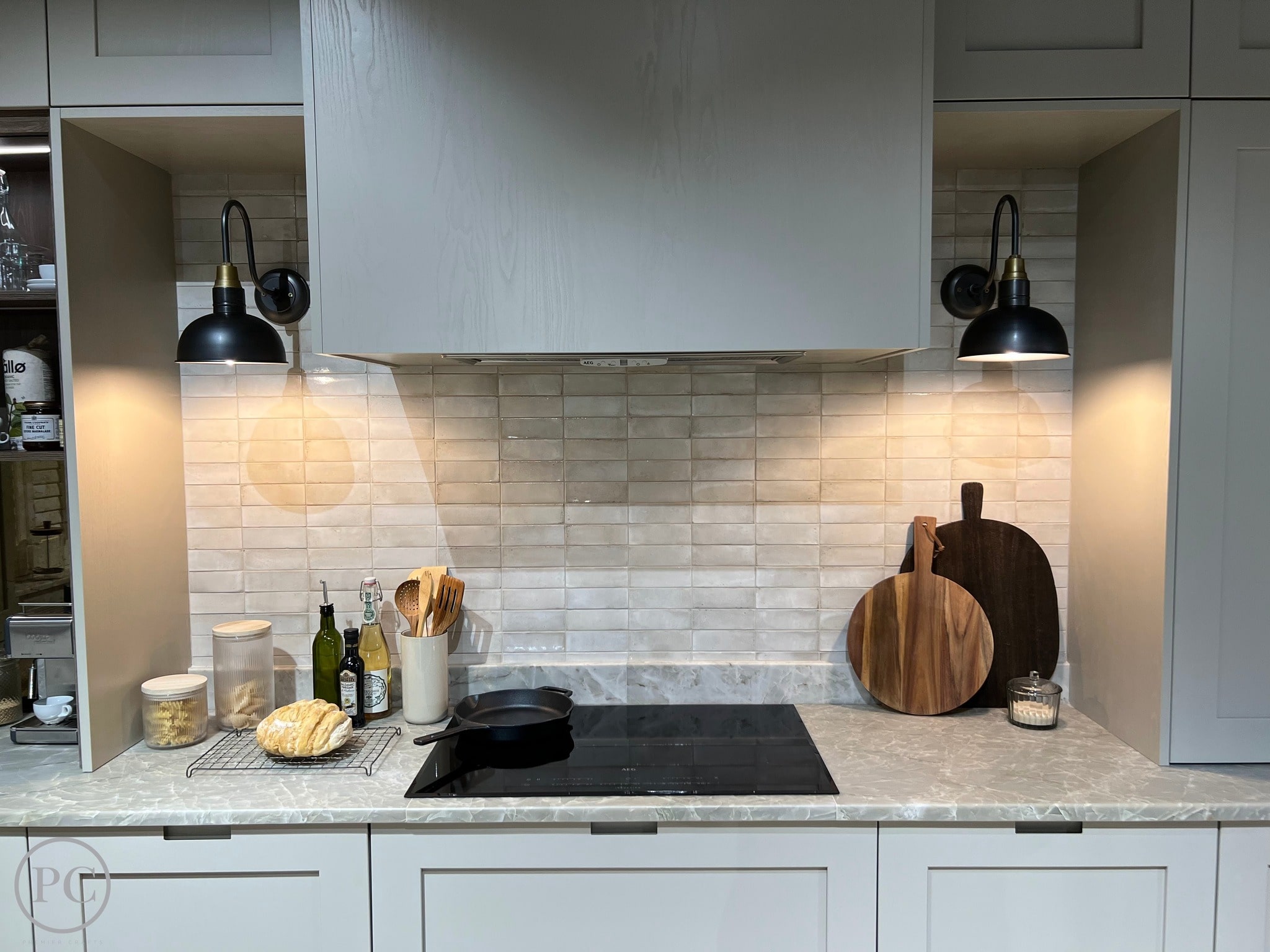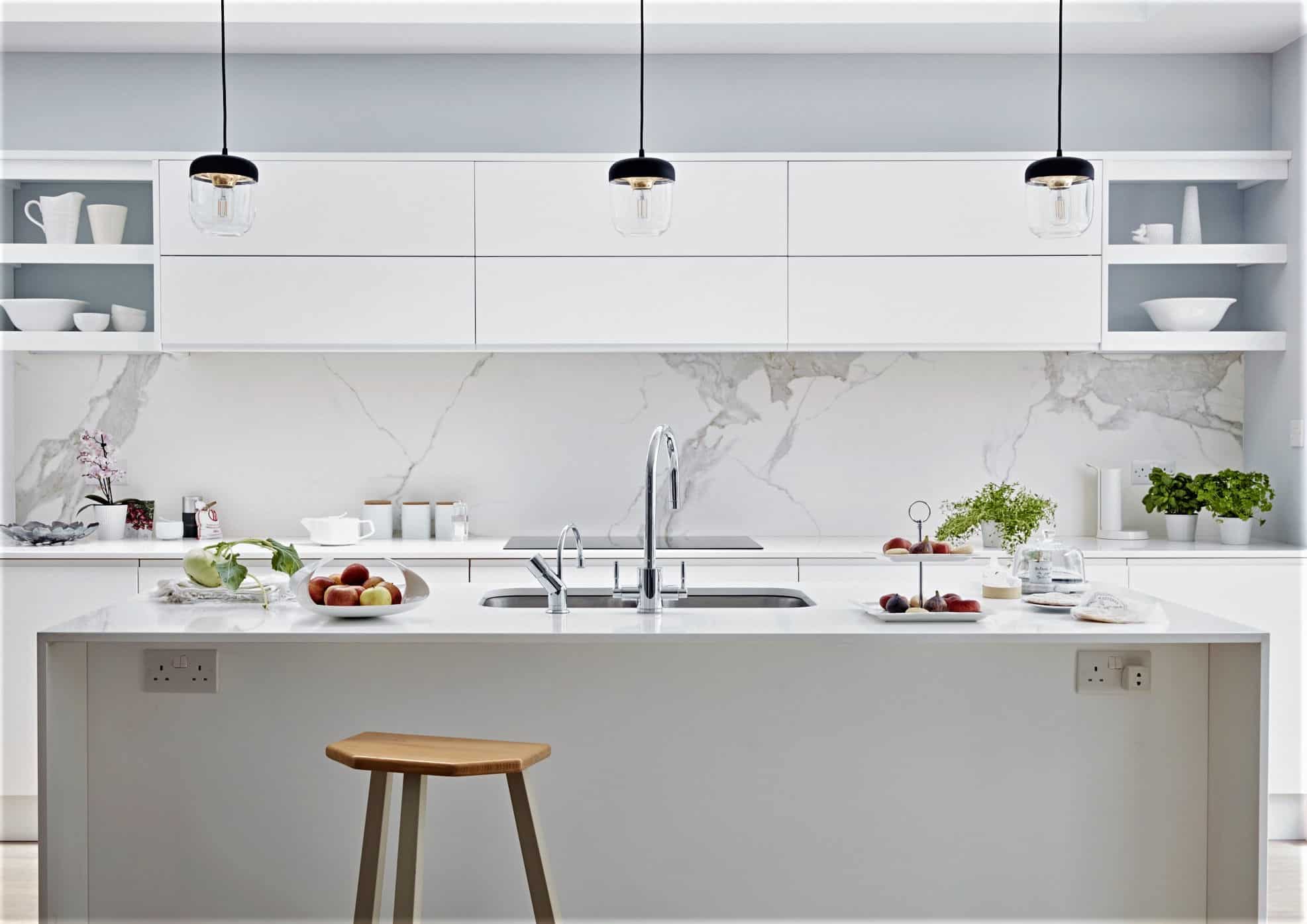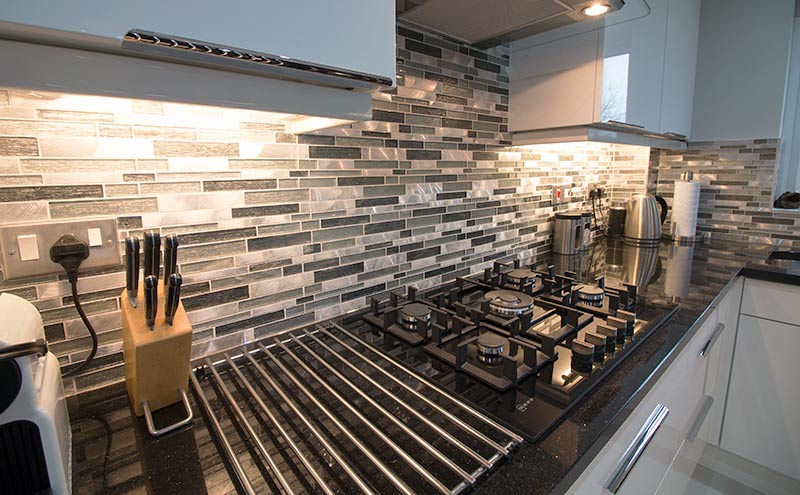Using Wall and Splashback Tiles in Kitchens as a Statement
In the world of interior design, kitchens are no longer just functional spaces for cooking—they’ve evolved into central hubs where families gather, guests are entertained, and personal style is proudly displayed. One of the most impactful ways to elevate a kitchen’s aesthetic while maintaining functionality is through the strategic use of wall and splashback tiles. These elements are more than mere protective barriers against splashes and spills; they have become powerful tools for self-expression, creativity, and design innovation.
The concept of using kitchen wall tiles and splashback tiles as a statement has gained immense popularity in recent years. From bold colors and intricate patterns to minimalist textures and metallic finishes, the choices available today allow homeowners and designers to create unique visual narratives within the heart of the home. Whether you’re renovating an old kitchen or designing a new one from scratch, understanding how to leverage these tiles can transform your space from ordinary to extraordinary.

This article explores the evolving role of wall and splashback tiles in modern kitchens, delving into their design potential, practical benefits, and creative applications. We’ll examine current trends, provide expert tips on material selection and placement, and showcase inspiring examples of how these tiles can be used to make a strong visual impact. By the end of this guide, you’ll not only appreciate the beauty and versatility of kitchen wall tiles, but also feel empowered to use them as a key design element in your own home.
The Evolution of Kitchen Design: Beyond Functionality
Kitchens have come a long way from being purely utilitarian spaces. In earlier decades, design was primarily dictated by necessity—storage, counter space, and appliances were the main focus. However, as open-plan living became more prevalent and the kitchen took center stage in home design, aesthetics began to play a crucial role.
Today, the kitchen is often considered the “heart” of the home. It’s where design meets lifestyle, and every detail—from lighting to flooring—contributes to the overall ambiance. Amidst this transformation, wall and splashback tiles have emerged as standout features that combine both form and function.
Historically, splashbacks were simple, white ceramic tiles chosen for their ease of cleaning and affordability. But with advancements in materials, manufacturing, and design thinking, tiles have evolved dramatically. Now, they offer endless possibilities for customization, texture, color, and pattern. This evolution has allowed homeowners to treat kitchen wall tiles not as background elements, but as focal points that reflect personality, culture, and artistic flair.
Moreover, the integration of technology in tile production has introduced innovative options such as digital printing, glass mosaics, and eco-friendly materials, making it easier than ever to achieve a bespoke look. As a result, splashback tiles are no longer confined to small strips behind the stove—they can stretch across entire walls, wrap around islands, or serve as dramatic backdrops for cabinetry.
Why Wall and Splashback Tiles Matter in Modern Kitchens
While the visual appeal of wall and splashback tiles is undeniable, their importance goes beyond aesthetics. Here are several reasons why these elements have become essential components in contemporary kitchen design:
- Protection Meets Practicality
At their core, splashbacks serve a practical purpose: protecting walls from moisture, grease, and heat. In high-traffic areas like kitchens, durability and ease of maintenance are crucial. Modern tiles offer a seamless solution that not only guards surfaces but also enhances cleanliness and longevity.
- Design Flexibility
One of the greatest strengths of kitchen wall tiles is their adaptability. Whether your style leans toward rustic charm, industrial edge, or sleek minimalism, there’s a tile to match. From matte to glossy finishes, geometric shapes to organic forms, the variety ensures that every homeowner can find a design that resonates with their vision.
- Visual Impact and Spatial Illusion
Strategically placed splashback tiles can manipulate perception of space. Light-colored tiles can make a small kitchen feel larger, while dark, rich tones add depth and sophistication. Mirrored or metallic tiles can reflect light and create a sense of openness, especially in windowless kitchens.
- Personal Expression
Perhaps most importantly, wall and splashback tiles offer a canvas for self-expression. They allow individuals to infuse their personality into a space without compromising on functionality. Whether it’s a hand-painted backsplash depicting a favorite scene or a geometric pattern that adds rhythm to the room, tiles can tell a story and evoke emotion.

Choosing the Right Materials for Your Kitchen Tiles
Selecting the right material for wall and splashback tiles is critical—not only for visual appeal but also for performance. Different materials bring different textures, durability levels, and care requirements. Here are some of the most popular options:
- Ceramic and Porcelain Tiles
These remain top choices due to their affordability, ease of cleaning, and wide range of styles. Ceramic tiles are ideal for splashbacks, offering resistance to water and stains. Porcelain, a denser version, is even more durable and suitable for both walls and floors.
- Glass Tiles
Glass splashbacks have surged in popularity thanks to their sleek appearance and reflective qualities. Available in solid colors, metallic finishes, and even custom-printed designs, they add a modern touch and are easy to wipe clean.
- Natural Stone Tiles
Marble, granite, and limestone bring natural elegance to any kitchen. While luxurious, natural stone requires sealing to prevent staining and etching from acidic substances like lemon juice or vinegar.
- Metallic and Stainless Steel Panels
For an industrial or contemporary vibe, metal splashbacks offer a unique alternative. Stainless steel is highly durable and hygienic, though it may show fingerprints. Brass and copper add warmth and character, developing a patina over time.
- Concrete and Terrazzo
Concrete tiles provide a raw, urban aesthetic, while terrazzo offers vibrant speckled patterns embedded in concrete. Both materials are robust and increasingly favored for their eco-friendly properties and artisanal appeal.
Each material brings its own set of advantages and considerations. When choosing, it’s important to balance your desired look with practical needs such as maintenance, budget, and environmental factors.
Creative Ways to Use Wall and Splashback Tiles as a Statement
Now that we’ve explored the foundational aspects of kitchen wall tiles, let’s dive into the exciting part: using them creatively to make a bold design statement. Here are several innovative approaches that go beyond traditional installation methods:
- Color Blocking for Drama
Instead of sticking to neutral tones, consider using contrasting colors to create dynamic zones within the kitchen. A deep navy blue behind the cooktop paired with crisp white upper tiles can instantly elevate the space. Color blocking not only adds visual interest but also draws attention to specific areas like the sink or prep station.
- Pattern Play
Patterns are a fantastic way to inject personality into a kitchen. Moroccan-inspired motifs, herringbone layouts, or hexagonal shapes can turn a plain wall into a work of art. Digital printing technology now allows for intricate custom designs, from floral prints to abstract compositions, giving homeowners unprecedented creative freedom.
- Textured Surfaces
Gone are the days when all tiles had to be flat and smooth. Textured tiles—whether ribbed, embossed, or three-dimensional—add tactile dimension to the kitchen. Consider using a wavy or faceted tile behind the island for a sculptural effect that catches the light beautifully.
- Tile Murals and Custom Graphics
For those who want to make a truly unique statement, tile murals are an excellent option. These large-format images or scenes printed onto ceramic panels can depict anything from cityscapes to botanical illustrations. They’re perfect for creating a conversation piece in a modern or eclectic kitchen.
- Mixing and Matching Materials
Why settle for one type of tile when you can blend several? Combining materials like wood-effect porcelain with glossy glass accents or pairing matte black tiles with metallic inserts can create a layered, multidimensional look. The key is to maintain harmony through color or theme while allowing contrast in texture.
- Going Floor-to-Ceiling
Traditionally, splashbacks were limited to a narrow strip behind countertops. Today, extending splashback tiles up to the ceiling or covering entire walls can dramatically change the perception of space. This technique works particularly well in small kitchens, where vertical tiling creates height and continuity.
- Accent Walls and Focal Points
Just like in living rooms, accent walls are becoming popular in kitchens. Choose a single wall—perhaps the one facing the dining area—and cover it entirely in eye-catching tiles. This could be a geometric mosaic, a metallic finish, or even a reclaimed brick look for a rustic twist.
By embracing these creative strategies, you can transform wall and splashback tiles from functional necessities into expressive design features that define the character of your kitchen.
Integrating Lighting with Tile Design
Lighting plays a pivotal role in highlighting the beauty of kitchen wall tiles and enhancing the ambiance of the space. Thoughtful integration of lighting with your tile choices can amplify their visual impact and create a cohesive atmosphere.
- Under-Cabinet Lighting
Installing LED strips beneath upper cabinets is a popular trend that serves both functional and aesthetic purposes. These lights illuminate countertops while casting a soft glow on the splashback tiles below, accentuating their texture and color. For example, warm lighting on marble tiles enhances their natural veining, while cool light on metallic tiles creates a futuristic sheen.
- Recessed and Accent Lighting
Recessed lighting in the ceiling provides general illumination, but strategically placing accent lights—such as track lighting or pendant lamps—can spotlight unique tile features. If you have a tile mural or textured wall, directional lighting can emphasize its details and add drama.
- Backlit Tiles
Certain types of glass or translucent tiles can be backlit for a stunning visual effect. Backlighting creates a glowing feature wall that becomes a focal point in the kitchen. This technique is especially effective in contemporary and minimalist interiors.
Combining tile design with intelligent lighting choices ensures that your splashback tiles don’t just look good during the day—they shine at night too.
Sustainability and Eco-Friendly Tile Options
As environmental consciousness continues to shape consumer preferences, many homeowners are seeking sustainable alternatives in their kitchen renovations. Fortunately, the tile industry has responded with eco-friendly options that align with green building principles.
- Recycled Glass Tiles
Made from post-consumer glass waste, recycled glass tiles offer a vibrant and environmentally responsible choice. Their shimmering surface reflects light beautifully, making them ideal for splashbacks. Plus, they’re non-porous and resistant to mold and mildew.
- Clay and Natural Terracotta
Clay-based tiles, including terracotta and quarry tiles, are fired at lower temperatures than porcelain, reducing energy consumption. Their earthy tones and natural textures complement rustic, bohemian, or Mediterranean-style kitchens.
- Low-VOC Sealants and Glazes
Even if your tiles aren’t made from recycled materials, opting for low-VOC (volatile organic compounds) sealants and glazes reduces indoor air pollution. This is especially important in enclosed spaces like kitchens, where ventilation may be limited.
- Locally Sourced Materials
Choosing locally manufactured tiles minimizes transportation emissions and supports regional economies. Many artisans and small-scale producers offer handmade tiles that are both unique and eco-conscious.
Sustainability doesn’t mean sacrificing style. With so many green options available, incorporating eco-friendly kitchen wall tiles into your design is both possible and rewarding.
Maintenance Tips for Long-Lasting Beauty
To keep your wall and splashback tiles looking fresh and vibrant, regular maintenance is essential. Here are some practical tips to ensure their longevity:
- Daily Cleaning
Wipe down tiles daily with a damp cloth or sponge to remove grease and food splatters. Use a mild detergent or vinegar-water solution for deeper cleaning.
- Avoid Harsh Chemicals
Strong acids or abrasive cleaners can damage certain tile surfaces, especially natural stone. Stick to pH-neutral cleaners to preserve the integrity of your tiles.
- Grout Care
Grout lines can accumulate dirt and discoloration over time. Use a grout-specific cleaner and a soft brush to scrub gently. Sealing grout annually helps prevent stains.
- Prevent Water Damage
Ensure proper ventilation in the kitchen to reduce humidity levels. Wipe away standing water promptly, especially around sinks and stovetops.
With consistent care, your splashback tiles will retain their luster and continue to enhance your kitchen for years to come.

Conclusion: Making a Lasting Impression with Wall and Splashback Tiles
In conclusion, wall and splashback tiles have transcended their original purpose to become integral elements of modern kitchen design. No longer relegated to the background, these tiles now take center stage as bold expressions of style, individuality, and craftsmanship.
From selecting the right materials to experimenting with color, texture, and lighting, there are countless ways to incorporate kitchen wall tiles into your space with intention and creativity. Whether you opt for a timeless classic or a daring contemporary look, the right tiles can transform your kitchen into a visually striking and highly functional environment.
As trends evolve and technology advances, the possibilities for customization and innovation continue to expand. So, whether you’re planning a full renovation or simply updating your existing kitchen, consider the power of splashback tiles to redefine your space.
Don’t be afraid to think outside the box—or the backsplash. Let your tiles tell a story, reflect your personality, and inspire those who enter your kitchen. After all, a well-designed kitchen isn’t just about cooking—it’s about creating experiences, memories, and moments that last a lifetime.
So go ahead—choose your tiles wisely, install them boldly, and watch as your kitchen becomes a true reflection of your unique style and vision.
Ready to transform your kitchen into a design masterpiece? Start exploring your options for wall and splashback tiles today. Visit local showrooms, browse online galleries, or consult with a professional designer to discover the perfect tiles that speak to your style. Remember, the smallest design decision can make the biggest impact—especially when it comes to kitchen wall tiles.
قیمت های موجود در سایت تاریخ بروزرسانی آن ها ذکر شده و قیمت نهایی محصولات نمی باشند. لطفا جهت ثبت سفارش و استعلام قیمت بروز با کارشناسان ما در ارتباط باشید.
(035-3357)